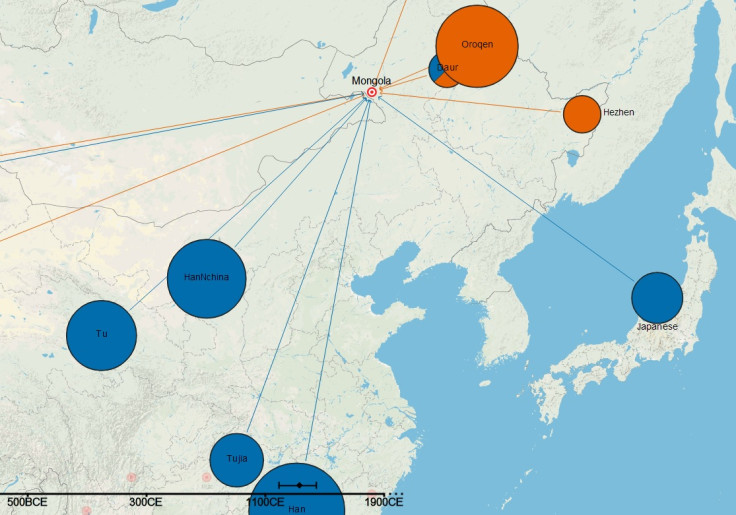Interactive Gene Map Shows How Human Races Mixed over 4,000 Years

An interactive map showing the genetic mix of mankind over the last 4,000 years has been created by experts at Oxford University and University College London.
The map shows the history of genetic mixing between 95 populations spanning Europe, Africa, Asia and South America.
Click Here To Open Map in New Window
Simon Myers of Oxford University said: "DNA really has the power to tell stories and uncover details of humanity's past. Because our approach uses only genetic data, it provides information independent from other sources.
"Many of our genetic observations match historical events, and we also see evidence of previously unrecorded genetic mixing. For example, the DNA of the Tu people in modern China suggests that in around 1200CE, Europeans similar to modern Greeks mixed with an otherwise Chinese-like population. Plausibly, the source of this European-like DNA might be merchants travelling the nearby Silk Road."
Published in the journal Science, the researchers developed statistical methods to analyse the DNA of 1,490 people across 95 populations.

Dubbed 'Globetrotter', the map shows the genetic legacy of the Mongol Empire – the Hazara people in Pakistan and six other populations are descendent from Mongol warriors, findings showed.
The team identified 'chunks' of DNA from different populations. People who shared more ancestry shared more chunks.
Study co-author Daniel Falush, from the Max Planck Institute for Evolutionary Anthropology in Leipzig, said: "Each population has a particular genetic 'palette'. If you were to paint the genomes of people in modern-day Maya, for example, you would use a mixed palette with colours from Spanish-like, West African and Native American DNA.
"This mix dates back to around 1670CE, consistent with historical accounts describing Spanish and West African people entering the Americas around that time. Though we can't directly sample DNA from the groups that mixed in the past, we can capture much of the DNA of these original groups as persisting, within a mixed palette of modern-day groups. This is a very exciting development."
Myers said identifying and understanding genetic similarities and differences is important to public health, as some populations are more at risk from diseases than others. An insight into rare genetic mutations can therefore be gained from the map: "We hope in future to include even more detailed sequencing, to spot these rare mutations and better understand their global spread," he said.
© Copyright IBTimes 2025. All rights reserved.






















